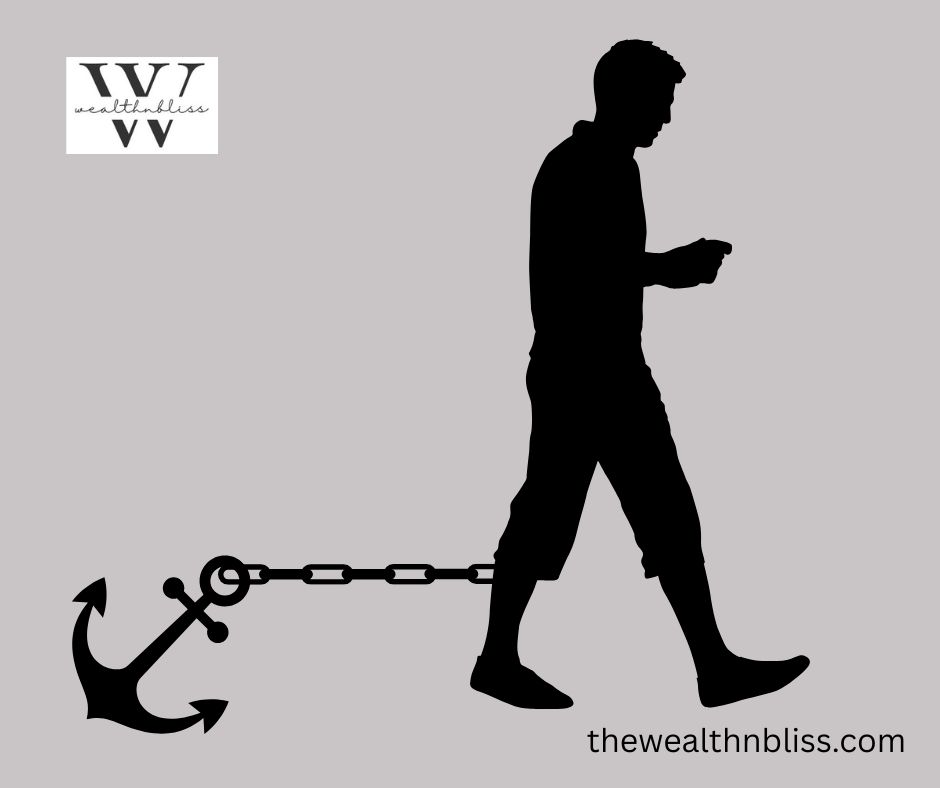
The Power of Anchoring Bias: Why Your Starting Point Steers Your Choices
Discover the concept of anchoring bias, how it shapes our decisions, and learn how to identify its influence, both positive and negative, on your choices.
Anchoring Bias
Assume you are in a shopping mall and see a price tag that says “Originally Rs.500, now only Rs.250!” and think, Wow, what a deal! Or maybe you’ve negotiated a salary, and the employer started with a low offer, making any slight increase feel like a win, even if it’s still below what you deserve. Or you went for dinner in a restaurant, and on the menu, you found a high-priced item of Rs 500, but you ordered a Rs 100 item because you saw it was cheaper, even if it’s overpriced for its quality. If any of these sounds familiar, you’ve encountered anchoring bias. Because of this cognitive bias, we base our decisions unduly on the first piece of information we are given (the “anchor”).
Our shopping, money decisions, relationships, and self-perception are all influenced by anchoring bias. This article will explain what anchoring bias is, how it affects daily life, and how we can deal with it.
What is anchoring bias?
Anchoring bias is a tendency in which individuals base their decisions unduly on the first piece of information they are given (the “anchor”). We use that first piece of information (number or fact) as a point of reference, even if it isn’t relevant, to make our judgments.
Anchoring bias is like a mental magnet. Once that initial number, idea, or impression sticks in your mind, it pulls all your subsequent thoughts and decisions toward it, often without you even realizing it. It’s a subtle yet powerful force that shapes everything from what we buy to how we negotiate, invest, and even perceive value.
If you walk into a store and see a pair of shoes marked “Original Price Rs. 200, Now Only Rs. 100!” with the original price of Rs. 200 as the reference, the 100-rupee price seems like a great deal, even if the shoes were never worth Rs. 200. Retailers use this tactic all the time to make us feel like we’re getting a deal.
Alternatively, suppose you purchased a stock at Rs. 100, and it now only trades at Rs. 70. Instead of evaluating the stock’s current potential, you are holding onto it, waiting for it to return to Rs. 100, and this is your anchor. While you should reevaluate this share, if it is overvalued, then you must exit from it. Otherwise, this can lead to poor investment decisions, as you’re fixated on the past rather than the present.
So, anchoring bias is when we rely too heavily on the first piece of information we are given.
It’s similar to hurling a mental dart at a board; depending on how precise it was, all subsequent throws are evaluated relative to the initial one.
How does anchoring bias shape our decisions?
Anchoring bias shapes our decisions by influencing how we interpret and evaluate information based on an initial reference point (the “anchor”). The first piece of information we receive becomes the benchmark for all subsequent decisions.

The psychology of anchoring bias is rooted in how our brains process information and make decisions. When we need to make a quick choice, our brains use mental tricks (heuristics). The first piece of information we receive serves as a reference point, reducing the cognitive effort required to evaluate new information. However, this shortcut can backfire when the anchor is misleading or irrelevant.
In a particular study, participants were instructed to spin a wheel that displayed numbers from 0 to 100. Following that, pupils were asked to calculate the proportion of African nations in the UN. Those who landed on higher numbers gave significantly higher estimates than those who landed on lower numbers, proving how random anchors can shape our perception.
Anchoring bias is strongly affected by how information is put together or presented. The context in which we encounter the anchor shapes its impact. A Rs. 20 water bottle might seem pricey in a food store, but it might not be so bad in a fancy restaurant. The context (grocery store vs. restaurant) changes how we perceive the anchor.
Anchoring bias is also caused by feelings in a big way. Positive emotions (like excitement over a “great deal”) or negative emotions (like the fear of missing out) can strengthen the anchor’s hold. Seeing a “limited time offer” creates a sense of urgency, making the anchor price feel even more compelling.
Anchoring bias persists because it’s a byproduct of how our brains are wired. The process involves balancing efficiency and accuracy. While it helps us make quick decisions, it can also lead to errors when the anchor is misleading or irrelevant.
Anchoring bias—good or bad?
The advantage or disadvantage of anchoring bias depends on the situation.
In some cases, it helps us make quick decisions and simplifies complex choices. For example, in negotiations, setting up a strong initial anchor can work to your advantage. However, it can also lead to poor decision-making when we rely too heavily on an arbitrary reference point.
It’s critical to understand when anchoring bias is beneficial and when it’s dishonest.The key is to be aware of its influence and use it strategically rather than being manipulated by it.
Anchoring bias can be good when–
- It simplifies decision-making by providing a reference point, which can be useful in situations where time or information is limited. When shopping, an initial price can help you quickly assess whether an item fits within your budget or not.
- It can be advantageous to set up a solid initial anchor during negotiations. For instance, starting with a higher salary request can lead to a better final offer.
- Anchors can serve as motivational benchmarks in goal setting. For example, anchoring on a savings goal (e.g., Rs. 100,000) can help you stay focused and disciplined.
- Anchors can create a sense of predictability in uncertain situations, helping reduce anxiety and decision fatigue. Such as using past performance as an anchor can help investors feel more confident about future decisions.
Anchoring bias can be bad when–
- Poor financial decisions may result from it. Anchoring on irrelevant or arbitrary numbers can result in overspending, undersaving, or making irrational investments.
- It skews judgments and perceptions. Anchors can distort our perception of value, fairness, or reality, leading to biased decisions. Such as in salary negotiations, a low initial offer can anchor your expectations, making it harder to negotiate a fair wage.
- Anchoring can make us resistant to new information or changing circumstances, causing us to stick to outdated or incorrect assumptions. Such as holding onto a losing investment because you’re anchored to the price you initially paid, even when market conditions have changed.
- It can create unrealistic expectations. Anchoring on past successes or failures can lead to unrealistic expectations, preventing growth or adaptation.
A natural component of human thought, anchoring bias has varying effects depending on how it is used and whether we are conscious of it. When acknowledged and controlled, anchoring can be a useful strategy for goal setting and decision-making. It can, however, result in irrational decisions and financial traps if ignored.
How to recognize anchoring bias in your life?
Recognizing anchoring bias in your life is the first step toward making more rational and informed decisions. Since anchoring bias often operates subconsciously, it takes a bit of self-awareness and reflection to spot it. Here are some practical strategies to help you identify when anchoring bias might be influencing your choices.
- Examine Past Choices: Consider the choices you’ve already made. Think about a recent purchase. Did the “original price” or a discount tag sway your decision, even if you didn’t need the item? If yes, then anchoring bias has taken place in your life.
- Look for Patterns in Your Spending: Analyze your spending habits to see if anchors are influencing your purchases. Do you often buy things because they’re “on sale” or “discounted,” even if you didn’t plan to buy them in the first place?
- Notice How You Set Goals: Are your goals based on arbitrary anchors, like past achievements or societal expectations? Such as if you’re saving for a vacation, is your budget based on what you think you “should” spend or on what you can realistically afford?
- Ask Yourself Key Questions: When making a decision, ask yourself:
“Would I still buy this if the original price or discount weren’t mentioned?” is a question to ask yourself before purchase.
Real-Life Scenarios to Watch For
The following are typical circumstances in which anchoring bias could infiltrate your life:
Strategies to overcome anchoring bias:
Now that we know how anchoring bias works, how can we avoid falling for it?
- Be Aware—Simply knowing about anchoring bias can help you recognize when it’s happening.
- Do Your Research—Before making a decision, gather independent information rather than relying on the first number you see.
- Consider Multiple Perspectives—Ask yourself: Would I make the same decision if the initial number were different?
- Take Your Time—Quick decisions are more likely to be influenced by anchoring. Take a step back and consider the circumstances impartially.
- Set Your Own Anchors—Instead of relying on external anchors, set your own standards. For example, research fair market prices before negotiating a salary or purchasing a big-ticket item.
Anchoring bias is a sneaky mental shortcut that affects everything from how much we spend to how we perceive value. But once you’re aware of it, you can take steps to make more rational, informed decisions. So next time you’re faced with a big purchase, salary negotiation, or any other decision, pause and ask yourself, Am I being anchored? The first step to making better decisions is awareness!
